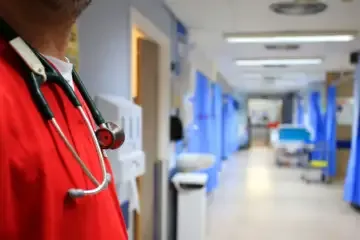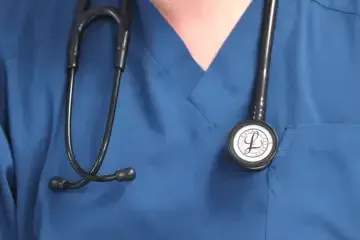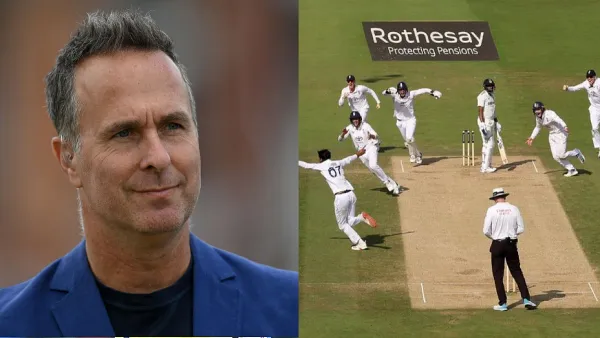Only doctors should diagnose patients, not PAs, government review says
admin | July 16, 2025 11:22 AM CST

Physician associates (PAs) should be banned from diagnosing patients who have not already had contact with a doctor for their illness, a Government-ordered review has found.
The report also acknowledged that NHS PAs have been used as substitutes for doctors, despite having significantly less training.
As such, calls for a major change to the role of PAs have also been made.
More than 3,500 PAs and 100 anaesthesia associates (AAs) are working in the NHS and there have been previous calls for an expansion in their number.
But a general lack of support for the roles from the medical profession - plus high-profile deaths of patients who were misdiagnosed by PAs - led Health Secretary Wes Streeting to order a review.
 Presenting her findings, Professor Gillian Leng, president of the Royal Society of Medicine, said: "Crucially I'm recommending that PAs should not see undifferentiated or untriaged patients.
"If (patients) are triaged, they (PAs) should be able to see adult patients with minor ailments in line with relevant guidance from the Royal College of GPs."
She said more detail was needed on which patients can be seen by PAs and national clinical protocols should be developed in this area.
She added: "Let's be clear, (the role of PAs) is working well in some places, but there indeed has been some substitution and any substitution is clearly risky and confusing for patients."
Prof Leng also recommended PAs should be renamed "physician assistants" to position them "as a supportive, complementary member of the medical team", while AAs should be renamed "physician assistants in anaesthesia".
Newly qualified PAs should also work in hospitals for two years before they are allowed to work in GP surgeries or mental health trusts.
The study said safety concerns in relation to PAs were "almost always about making a diagnosis and deciding the initial treatment, particularly in primary care or the emergency department, where patients first present with new symptoms."
Presenting her findings, Professor Gillian Leng, president of the Royal Society of Medicine, said: "Crucially I'm recommending that PAs should not see undifferentiated or untriaged patients.
"If (patients) are triaged, they (PAs) should be able to see adult patients with minor ailments in line with relevant guidance from the Royal College of GPs."
She said more detail was needed on which patients can be seen by PAs and national clinical protocols should be developed in this area.
She added: "Let's be clear, (the role of PAs) is working well in some places, but there indeed has been some substitution and any substitution is clearly risky and confusing for patients."
Prof Leng also recommended PAs should be renamed "physician assistants" to position them "as a supportive, complementary member of the medical team", while AAs should be renamed "physician assistants in anaesthesia".
Newly qualified PAs should also work in hospitals for two years before they are allowed to work in GP surgeries or mental health trusts.
The study said safety concerns in relation to PAs were "almost always about making a diagnosis and deciding the initial treatment, particularly in primary care or the emergency department, where patients first present with new symptoms."
 It added: "It is here that the risk of missing an unusual disease or condition is highest, and where the more extensive training of doctors across a breadth of specialties is important.
"Making the wrong initial diagnosis and putting patients on an inappropriate pathway can be catastrophic."
Despite the shorter two years of training for PAs, where local NHS services have struggled with filling roles, "the easy option in some cases was simply to fill gaps in medical rotas with PAs", the report went on.
"This seems to have been done without taking into account the more limited training of the PAs and how the roles would interact, other than with the caveat that they would be supervised by doctors.
"This lack of planning may have been responsible for driving the resentment felt by some resident (doctors) and potentially exposed patients to unnecessary risk."
The study noted concerns in the medical profession about the impact on training and employment of resident doctors when PAs take on tasks.
When it comes to the safety of PAs and AAs, Prof Leng said the "evidence is poor", with "no compelling evidence" in published research "that PAs were safe to work as doctor substitutes in primary care".
She also said the evidence was poor when it came to cost effectiveness.
The report said that while research suggests patients are satisfied after seeing a PA, some did not know they were not seeing a doctor.
Many doctors also told the review they were concerned about the time required to supervise PAs and AAs and the lack of training for supervisors about the role of PAs.
A survey conducted for the report found "relatively few doctors felt it was appropriate for PAs to diagnose illness", with only 29 per cent of those working with PAs in primary care backing this, and 14 per cent in secondary care.
It added: "It is here that the risk of missing an unusual disease or condition is highest, and where the more extensive training of doctors across a breadth of specialties is important.
"Making the wrong initial diagnosis and putting patients on an inappropriate pathway can be catastrophic."
Despite the shorter two years of training for PAs, where local NHS services have struggled with filling roles, "the easy option in some cases was simply to fill gaps in medical rotas with PAs", the report went on.
"This seems to have been done without taking into account the more limited training of the PAs and how the roles would interact, other than with the caveat that they would be supervised by doctors.
"This lack of planning may have been responsible for driving the resentment felt by some resident (doctors) and potentially exposed patients to unnecessary risk."
The study noted concerns in the medical profession about the impact on training and employment of resident doctors when PAs take on tasks.
When it comes to the safety of PAs and AAs, Prof Leng said the "evidence is poor", with "no compelling evidence" in published research "that PAs were safe to work as doctor substitutes in primary care".
She also said the evidence was poor when it came to cost effectiveness.
The report said that while research suggests patients are satisfied after seeing a PA, some did not know they were not seeing a doctor.
Many doctors also told the review they were concerned about the time required to supervise PAs and AAs and the lack of training for supervisors about the role of PAs.
A survey conducted for the report found "relatively few doctors felt it was appropriate for PAs to diagnose illness", with only 29 per cent of those working with PAs in primary care backing this, and 14 per cent in secondary care.
 The survey also found "marked differences in which tasks were considered appropriate in primary and secondary care, with PAs significantly more likely than doctors to believe that certain activities were appropriate for them to carry out".
When it came to AAs, there were also questions over whether the role was actually needed as fully qualified anaesthetists already face tough competition to find a job.
Prof Leng concluded there were "no convincing reasons to abolish the roles of AA or PA" but there is also no case "for continuing with the roles unchanged".
She recommended that both PAs and AAs should have the opportunity for ongoing training and development, with potential to prescribe medicines in the future, and they should also should have the opportunity to become an "advanced" PA or AA.
A named doctor should take overall responsibility for each PA, while clothing, lanyards, badges and staff information should be standardised to "distinguish physician assistants from doctors".
Six patient deaths linked to contact with PAs have been recorded by coroners in England.
One high-profile death involved Emily Chesterton, 30, who died from a pulmonary embolism. She was misdiagnosed by a PA on two occasions and told she had anxiety.
Unison head of health, Helga Pile, said: "By working closely with doctors and other healthcare professionals, these roles can make a real difference to the improvement of services and reduction of waiting lists.
"Clearer identification of physician associates and anaesthesia associates will give patients a greater understanding of who's delivering their care and what they can expect. "
The survey also found "marked differences in which tasks were considered appropriate in primary and secondary care, with PAs significantly more likely than doctors to believe that certain activities were appropriate for them to carry out".
When it came to AAs, there were also questions over whether the role was actually needed as fully qualified anaesthetists already face tough competition to find a job.
Prof Leng concluded there were "no convincing reasons to abolish the roles of AA or PA" but there is also no case "for continuing with the roles unchanged".
She recommended that both PAs and AAs should have the opportunity for ongoing training and development, with potential to prescribe medicines in the future, and they should also should have the opportunity to become an "advanced" PA or AA.
A named doctor should take overall responsibility for each PA, while clothing, lanyards, badges and staff information should be standardised to "distinguish physician assistants from doctors".
Six patient deaths linked to contact with PAs have been recorded by coroners in England.
One high-profile death involved Emily Chesterton, 30, who died from a pulmonary embolism. She was misdiagnosed by a PA on two occasions and told she had anxiety.
Unison head of health, Helga Pile, said: "By working closely with doctors and other healthcare professionals, these roles can make a real difference to the improvement of services and reduction of waiting lists.
"Clearer identification of physician associates and anaesthesia associates will give patients a greater understanding of who's delivering their care and what they can expect. "
 Presenting her findings, Professor Gillian Leng, president of the Royal Society of Medicine, said: "Crucially I'm recommending that PAs should not see undifferentiated or untriaged patients.
"If (patients) are triaged, they (PAs) should be able to see adult patients with minor ailments in line with relevant guidance from the Royal College of GPs."
She said more detail was needed on which patients can be seen by PAs and national clinical protocols should be developed in this area.
She added: "Let's be clear, (the role of PAs) is working well in some places, but there indeed has been some substitution and any substitution is clearly risky and confusing for patients."
Prof Leng also recommended PAs should be renamed "physician assistants" to position them "as a supportive, complementary member of the medical team", while AAs should be renamed "physician assistants in anaesthesia".
Newly qualified PAs should also work in hospitals for two years before they are allowed to work in GP surgeries or mental health trusts.
The study said safety concerns in relation to PAs were "almost always about making a diagnosis and deciding the initial treatment, particularly in primary care or the emergency department, where patients first present with new symptoms."
Presenting her findings, Professor Gillian Leng, president of the Royal Society of Medicine, said: "Crucially I'm recommending that PAs should not see undifferentiated or untriaged patients.
"If (patients) are triaged, they (PAs) should be able to see adult patients with minor ailments in line with relevant guidance from the Royal College of GPs."
She said more detail was needed on which patients can be seen by PAs and national clinical protocols should be developed in this area.
She added: "Let's be clear, (the role of PAs) is working well in some places, but there indeed has been some substitution and any substitution is clearly risky and confusing for patients."
Prof Leng also recommended PAs should be renamed "physician assistants" to position them "as a supportive, complementary member of the medical team", while AAs should be renamed "physician assistants in anaesthesia".
Newly qualified PAs should also work in hospitals for two years before they are allowed to work in GP surgeries or mental health trusts.
The study said safety concerns in relation to PAs were "almost always about making a diagnosis and deciding the initial treatment, particularly in primary care or the emergency department, where patients first present with new symptoms."
 It added: "It is here that the risk of missing an unusual disease or condition is highest, and where the more extensive training of doctors across a breadth of specialties is important.
"Making the wrong initial diagnosis and putting patients on an inappropriate pathway can be catastrophic."
Despite the shorter two years of training for PAs, where local NHS services have struggled with filling roles, "the easy option in some cases was simply to fill gaps in medical rotas with PAs", the report went on.
"This seems to have been done without taking into account the more limited training of the PAs and how the roles would interact, other than with the caveat that they would be supervised by doctors.
"This lack of planning may have been responsible for driving the resentment felt by some resident (doctors) and potentially exposed patients to unnecessary risk."
The study noted concerns in the medical profession about the impact on training and employment of resident doctors when PAs take on tasks.
When it comes to the safety of PAs and AAs, Prof Leng said the "evidence is poor", with "no compelling evidence" in published research "that PAs were safe to work as doctor substitutes in primary care".
She also said the evidence was poor when it came to cost effectiveness.
The report said that while research suggests patients are satisfied after seeing a PA, some did not know they were not seeing a doctor.
Many doctors also told the review they were concerned about the time required to supervise PAs and AAs and the lack of training for supervisors about the role of PAs.
A survey conducted for the report found "relatively few doctors felt it was appropriate for PAs to diagnose illness", with only 29 per cent of those working with PAs in primary care backing this, and 14 per cent in secondary care.
It added: "It is here that the risk of missing an unusual disease or condition is highest, and where the more extensive training of doctors across a breadth of specialties is important.
"Making the wrong initial diagnosis and putting patients on an inappropriate pathway can be catastrophic."
Despite the shorter two years of training for PAs, where local NHS services have struggled with filling roles, "the easy option in some cases was simply to fill gaps in medical rotas with PAs", the report went on.
"This seems to have been done without taking into account the more limited training of the PAs and how the roles would interact, other than with the caveat that they would be supervised by doctors.
"This lack of planning may have been responsible for driving the resentment felt by some resident (doctors) and potentially exposed patients to unnecessary risk."
The study noted concerns in the medical profession about the impact on training and employment of resident doctors when PAs take on tasks.
When it comes to the safety of PAs and AAs, Prof Leng said the "evidence is poor", with "no compelling evidence" in published research "that PAs were safe to work as doctor substitutes in primary care".
She also said the evidence was poor when it came to cost effectiveness.
The report said that while research suggests patients are satisfied after seeing a PA, some did not know they were not seeing a doctor.
Many doctors also told the review they were concerned about the time required to supervise PAs and AAs and the lack of training for supervisors about the role of PAs.
A survey conducted for the report found "relatively few doctors felt it was appropriate for PAs to diagnose illness", with only 29 per cent of those working with PAs in primary care backing this, and 14 per cent in secondary care.
 The survey also found "marked differences in which tasks were considered appropriate in primary and secondary care, with PAs significantly more likely than doctors to believe that certain activities were appropriate for them to carry out".
When it came to AAs, there were also questions over whether the role was actually needed as fully qualified anaesthetists already face tough competition to find a job.
Prof Leng concluded there were "no convincing reasons to abolish the roles of AA or PA" but there is also no case "for continuing with the roles unchanged".
She recommended that both PAs and AAs should have the opportunity for ongoing training and development, with potential to prescribe medicines in the future, and they should also should have the opportunity to become an "advanced" PA or AA.
A named doctor should take overall responsibility for each PA, while clothing, lanyards, badges and staff information should be standardised to "distinguish physician assistants from doctors".
Six patient deaths linked to contact with PAs have been recorded by coroners in England.
One high-profile death involved Emily Chesterton, 30, who died from a pulmonary embolism. She was misdiagnosed by a PA on two occasions and told she had anxiety.
Unison head of health, Helga Pile, said: "By working closely with doctors and other healthcare professionals, these roles can make a real difference to the improvement of services and reduction of waiting lists.
"Clearer identification of physician associates and anaesthesia associates will give patients a greater understanding of who's delivering their care and what they can expect. "
The survey also found "marked differences in which tasks were considered appropriate in primary and secondary care, with PAs significantly more likely than doctors to believe that certain activities were appropriate for them to carry out".
When it came to AAs, there were also questions over whether the role was actually needed as fully qualified anaesthetists already face tough competition to find a job.
Prof Leng concluded there were "no convincing reasons to abolish the roles of AA or PA" but there is also no case "for continuing with the roles unchanged".
She recommended that both PAs and AAs should have the opportunity for ongoing training and development, with potential to prescribe medicines in the future, and they should also should have the opportunity to become an "advanced" PA or AA.
A named doctor should take overall responsibility for each PA, while clothing, lanyards, badges and staff information should be standardised to "distinguish physician assistants from doctors".
Six patient deaths linked to contact with PAs have been recorded by coroners in England.
One high-profile death involved Emily Chesterton, 30, who died from a pulmonary embolism. She was misdiagnosed by a PA on two occasions and told she had anxiety.
Unison head of health, Helga Pile, said: "By working closely with doctors and other healthcare professionals, these roles can make a real difference to the improvement of services and reduction of waiting lists.
"Clearer identification of physician associates and anaesthesia associates will give patients a greater understanding of who's delivering their care and what they can expect. "
READ NEXT
-
Meeet man who once worked as waiter, served food at Saif Ali Khan and Kareena Kapoor’s wedding, is now a star, name is…

-
Shiney Ahuja who was jailed for 7 years looks unrecognisable at 50, left India, now stays in…

-
'How Only 1 Team Has Been...': Michael Vaughan Questions ICC's Decision Over Penalising England For Slow Overrate During Lord's Test

-
'Everybody Is Worried, Hurt, Scared...': Sunil Chhetri Writes About Current State Of Indian Football After ISL Put On Hold

-
'Bihar Public Service Commission's TRE 4.0 To Be Held Before Assembly Elections,' Confirms State Education Minister Sunil Kumar
